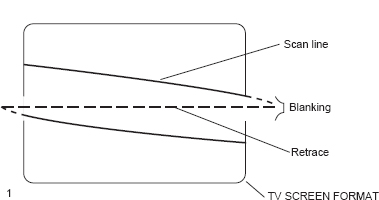Every picture needs certain information.
Analog Sync Generator Signals (1)
Drive Pulses
The first thing the sync generator provides is drive pulses. These are the signals that tell the camera what line of the CCD to read off. There are two types of drive pulses, one each to control both the horizontal and vertical position of information being read off of the CCD. These two types are horizontal drive pulses and vertical drive pulses.
Blanking Pulses
The second type of signal the sync generator provides is blanking pulses. As you might suspect, the blanking pulses tell the electron gun when to lower its voltage at the end of a line or field. There are two types of blanking pulses: horizontal blanking pulses (end of a line) and vertical blanking pulses (end of a field).
Sync Pulses
The third type of signal the sync generator provides is sync pulses. Horizontal sync pulses tell the electron gun to retrace to the beginning of the next line. Vertical sync pulses are at the end of a field and tell the electron gun to retrace to the top of the picture. The third type of sync pulse that the sync generator generates is color sync, also called color subcarrier, color burst, or 3.58 (pronounced “three five eight,” the meaning of which will be explained later on this page).
Color Burst
Color burst, the fourth type of signal, is a reference signal inserted in the back porch of every line of video. The color burst acts as a marker, and the color information for each line is encoded onto that line based on the marker. If the marker is off, so is the color. The key aspect of that marker is its frequency. The color burst is really a burst of energy at a specific frequency. That frequency is 3,579,545 Hz ± 5 Hz. This is normally rounded up to 3.58 MHz, hence the name 3.58. (PAL systems use a color burst frequency of 4.4 Mhz.) If that frequency is off, the colors will be off.
Rather than sending all of these sync signals separately to each device in a television system, which requires a lot of additional cables and connectors, the television industry has developed a combined signal called color black reference or black reference or just black. This reference signal, which is delivered on one cable, contains all of the necessary sync signals for color television system synchronization.
1. Blanking and retrace.
2. Components of composite video.


